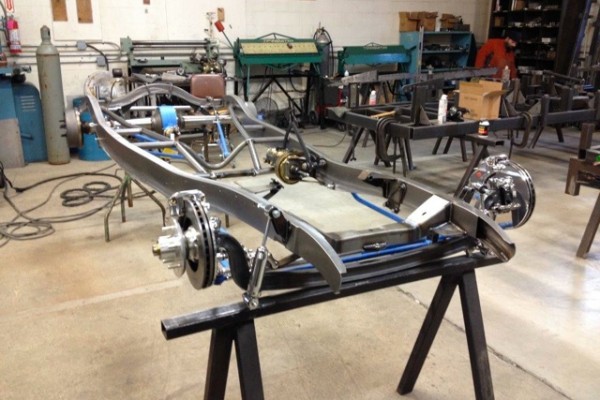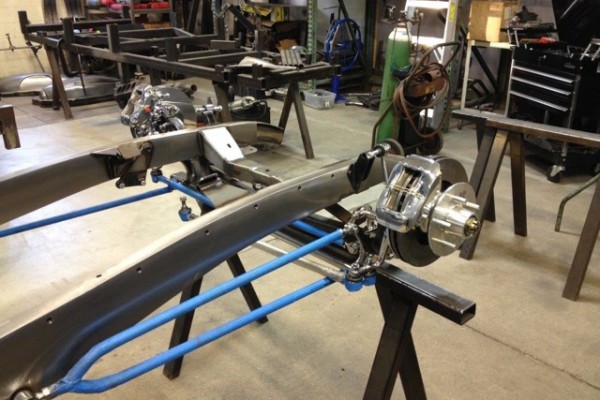Ask five gearheads what a traditional hot rod is and you’ll get five different answers. Ask cousins Michael and Denny Terzich of ProRides what a traditional hot rod is and they won’t tell you—they’ll just build one.
“We’re better known for our Drag Week race cars and radical builds like my 1937 Ford woodie wagon and Denny’s upcoming Xbox ’55 Chevy,” Michael said. “So we decided to build something more on the traditional side, but with the ProRides signature look and attention to detail.”
Since the car would be Michael’s, he got to choose what to build. He went with a 1933 Ford roadster and had designer Gary Ragle of Ragle Design draw up a rendering. Gary came up with a design in two-tone green with full fenders and a bigs ‘n littles rake. To our eyes, it’s kind of a 1960s or early ‘70s street rod look. The ’33 was christened Absinthe after the potent, green-colored liquor.
Michael turned to Precision Hot Rods and Fabrication in Macedonia, OH to build the chassis. Precision fabricated the frame using 1933/34 style Ford boxed frame rails, a tubular transmission/K member, and a custom rear spring U-bolt plate. Up front is a five-inch drop axle with hairpin radius rods, monoleaf spring, panhard bar, and tubular shocks. Out back is a Winters quick-change rear axle supported by a leaf spring and ladder bars with tubular shocks. Brakes are power front disc/rear drum.
Michael wanted Absinthe to be all-steel, so he went with an American Speed Company’s Speed33™ body. It’s a dead-ringer for an original ’33 Ford, but features a steel substructure for maximum body rigidity, plus a fully integrated convertible top that stows under a hard tonneau. Precision Hot Rods massaged the Speed33 body to fit the chassis, and judging from the photos, they nailed the rendering’s look to a T.
Back in Michael’s shop, the Ford was fitted with the drivetrain. In another nod to “tradition,” he went with a tri-power small block Chevy sourced from Summit Racing. The engine is based on a BluePrint Engines 383 cubic inch long block rated at 430 horsepower and 450 ft.-lbs. of torque. Up top is an Edelbrock Three-Deuce intake manifold and Summit Racing’s 3×2 tri-power carburetor setup that comes complete with linkage and fuel line.
Since a traditional hot rod has three pedals, Michael opted for an American Powertrain Tremec TKO 500 five-speed transmission with a McLeod clutch, QuickTime bellhousing, and a Tilton Engineering hydraulic throwout bearing assembly.
Michael sent us a bunch of photos of the ’33 under construction. As of this writing, the exhaust system is finished and the drivetrain was pulled to get ready for bodywork and paint. We’ll post updates on Absinthe as we get them.









Comments